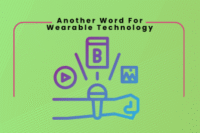What Are The Features of Internet of Things (IoT)
Published: 03 Mar 2025
The Internet of Things (IoT) is changing our lives, with over 30 billion connected devices expected by 2025. But what are the features of the Internet of Things that make it so powerful? From connectivity and automatic processes to real-time data processing, IoT simplifies tasks, improves efficiency, and creates smarter environments.
In this blog, we’ll explain the features of the internet of things and how they impact everyday life.

Key Features Of Internet of Things (IoT)
The key features of the Internet of Things (IoT) help us understand and explain how IoT works in real life. Here is a simple list of characteristics of Internet of Things.
- Connectivity
- Sensors
- Automation
- Real-Time Data Processing
- Scalability
- Security
- Remote Access
Now we will discuss the above key features of IoT in detail.
1. Connectivity
What it means: IoT devices are connected to the internet or to each other, allowing them to share data and work together.
Why it matters: Without connectivity, IoT devices wouldn’t be able to communicate or function as a system.
Example: Your smartwatch connects to your phone to sync fitness data.
2. Sensors
What it means: IoT devices use sensors to gather information about their environment, such as temperature, motion, or light.
Why it matters: Sensors provide the data needed for devices to function intelligently.
Example: A smart security camera detects motion and sends you an alert.
3. Automation
What it means: IoT devices can perform tasks on their own without human intervention.
Why it matters: This saves time and effort, making life more convenient.
Example: A smart thermostat adjusts the temperature automatically based on your preferences.
4. Real-Time Data Processing
What it means: IoT devices collect and process data instantly, allowing for quick decisions and actions.
Why it matters: Real-time processing ensures efficiency and responsiveness.
Example: Traffic sensors analyze vehicle movement and adjust traffic lights in real-time to reduce congestion.
5. Scalability
What it means: IoT systems can grow by adding more devices without losing performance.
Why it matters: Scalability ensures that IoT solutions can adapt to changing needs.
Example: Adding more smart devices, like sensors or cameras, to your home network.
6. Security
What it means: IoT devices need strong security measures to protect data and prevent unauthorized access.
Why it matters: Security ensures your personal information and devices are safe.
Example: Using encryption to secure data from smart home devices.
7. Remote Access
What it means: Internet of things (IoT) devices can be controlled and monitored from anywhere using the internet.
Why it matters: Remote access allows you to manage your devices even when you’re not physically present, adding convenience and flexibility.
Example: Using a smartphone app to check your home security cameras while you’re on vacation.
Internet of Things Meaning in Urdu
انٹرنیٹ آف تھنگز (Internet of Things) کا مطلب ہے “اشیاء کا انٹرنیٹ”۔ یہ ایک ایسا نظام ہے جس میں روزمرہ کی اشیاء کو انٹرنیٹ سے منسلک کیا جاتا ہے تاکہ وہ آپس میں معلومات کا تبادلہ کر سکیں اور خودکار طریقے سے کام کر سکیں۔ اس میں گھریلو آلات، گاڑیاں، مشینری، اور دیگر ڈیوائسز شامل ہو سکتی ہیں جو ڈیٹا کو جمع کرتے ہیں اور اسے شیئر کرتے ہیں تاکہ زندگی کو آسان اور زیادہ موثر بنایا جا سکے۔
Conclusion
The key features of the Internet of Things (IoT) make our lives smarter and easier. Features like connectivity, automation, data collection, and real-time monitoring help improve daily tasks. IoT connected devices, making them work together without human effort. This improves efficiency and saves time.
In the future, IoT will play a bigger role in smart homes, healthcare, and industries. As technology grows, IoT will become more advanced and affordable. It will help people live better lives and make businesses work faster. IoT has the potential to change the way we live and work.
FAQs
The role of the Internet of Things (IoT) is to connect devices to the internet. It helps devices share information and work automatically. This makes daily tasks easier and faster.
The characteristics of the Internet of Things (IoT) include connectivity, automation, and data collection. It allows devices to communicate with each other. IoT makes life smarter and more convenient.
The most important feature of IoT is connectivity. It helps devices communicate and share data with each other. This makes devices smarter and more efficient.
IoT is generally safe to use, but it can have security risks. Users should protect their devices with strong passwords and regular updates. This helps keep personal data safe.

- Be Respectful
- Stay Relevant
- Stay Positive
- True Feedback
- Encourage Discussion
- Avoid Spamming
- No Fake News
- Don't Copy-Paste
- No Personal Attacks

- Be Respectful
- Stay Relevant
- Stay Positive
- True Feedback
- Encourage Discussion
- Avoid Spamming
- No Fake News
- Don't Copy-Paste
- No Personal Attacks



